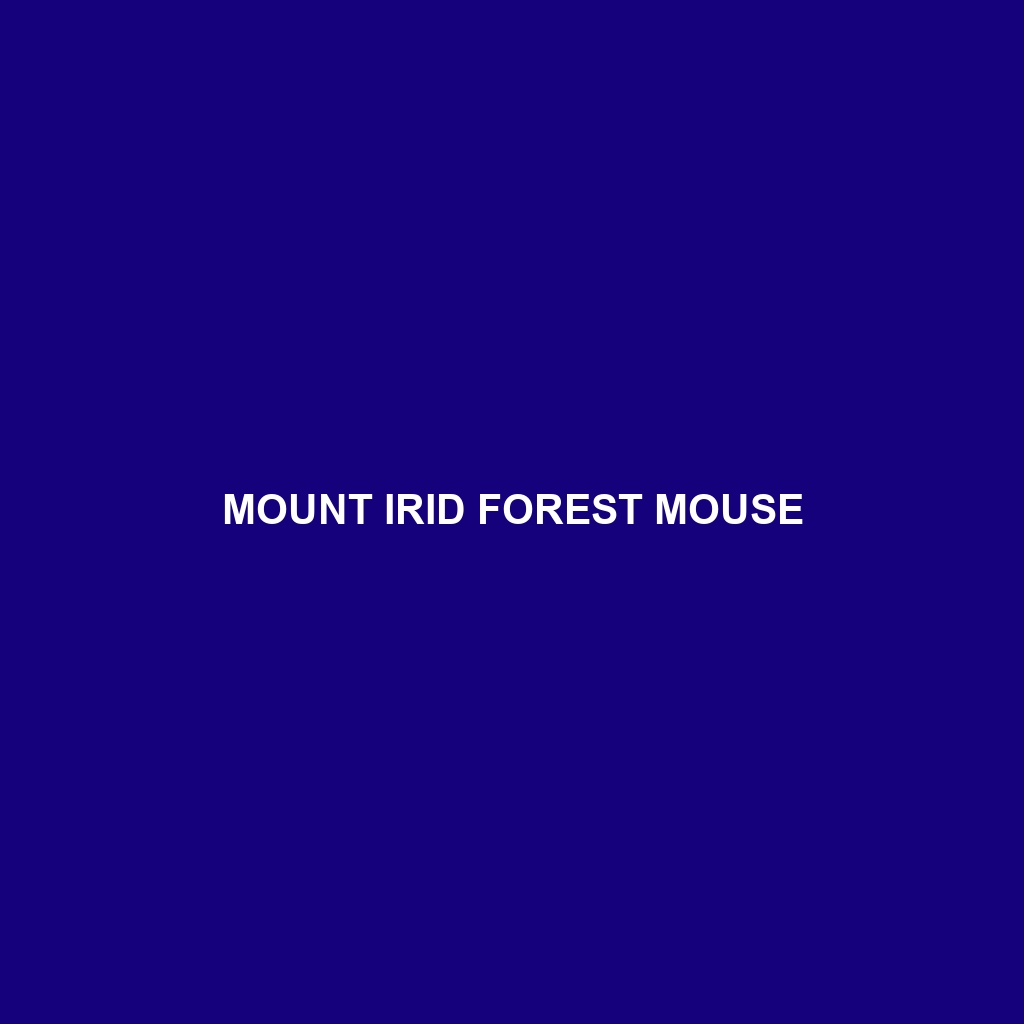Mount Irid Forest Mouse Species Description
Common Name: Mount Irid Forest Mouse
Scientific Name: Mus iridensis
Habitat
The Mount Irid Forest Mouse is primarily found in the montane forests of the Mount Irid region, situated in the southeastern part of Asia. This species thrives in humid, dense forests characterized by a rich understory of shrubs and herbs, making it particularly sensitive to deforestation and habitat degradation. Its habitat is crucial for the survival of various flora and fauna, emphasizing the importance of such environments in biodiversity conservation.
Physical Characteristics
The Mount Irid Forest Mouse is a medium-sized rodent, typically measuring about 20-25 cm in total length, including a long tail that aids in balance. Its fur is generally a soft brown color with lighter underparts, providing effective camouflage against the forest floor. Distinctive features include large, rounded ears and small, black eyes that enhance its senses in low-light conditions. The mouse’s nimble body and elongated limbs are well-adapted for climbing and navigating through the intricate branches of its forest habitat.
Behavior
This species is predominantly nocturnal, exhibiting a range of behaviors that are adapted to its forest surroundings. The Mount Irid Forest Mouse is known for being agile and is often seen climbing trees to forage for food. It communicates through a variety of vocalizations, particularly during the mating season. Social structures have been observed, with individuals forming small groups, which may enhance their foraging efficiency and provide protection against predators.
Diet
The diet of the Mount Irid Forest Mouse mainly consists of seeds, fruits, and leaves, making it an important seed disperser within its ecosystem. It forages actively at night, searching for nutritious offerings from the diverse plant life in its habitat. This species has adapted to consume various food sources based on availability, showcasing its opportunistic feeding habits that align with seasonal changes in resource distribution.
Reproduction
The breeding season for the Mount Irid Forest Mouse typically occurs during the warmer months, coinciding with the abundance of food. Females usually produce 3-5 offspring per litter, which are born blind and hairless. Maternal care is extensive, with mothers nesting in hidden locations to protect their young from potential threats. The young are weaned after about three weeks and begin to explore their surroundings shortly thereafter, showcasing rapid growth and development within this species.
Conservation Status
The Mount Irid Forest Mouse is currently classified as endangered due to habitat loss resulting from deforestation and human encroachment. Conservation efforts are essential to ensure the survival of this species, as well as the unique ecosystem it inhabits. Ongoing habitat protection initiatives and sustainable practices are critical to mitigate further decline.
Interesting Facts
One unique aspect of the Mount Irid Forest Mouse is its remarkable ability to navigate through dense vegetation using its acute sense of smell. Researchers have noted that this species can detect food and potential predators with astonishing precision, enhancing its survival odds in a complex forest environment. Additionally, their vocalizations have been studied for insights into social behavior and territory establishment.
Role in Ecosystem
The Mount Irid Forest Mouse plays a vital role in its ecosystem as both a herbivore and a prey species. By feeding on seeds and fruits, it aids in plant propagation and seed dispersal, promoting forest regeneration. Moreover, it serves as a food source for various predators, including birds of prey and small carnivores, contributing to the delicate balance of the forest food web.
